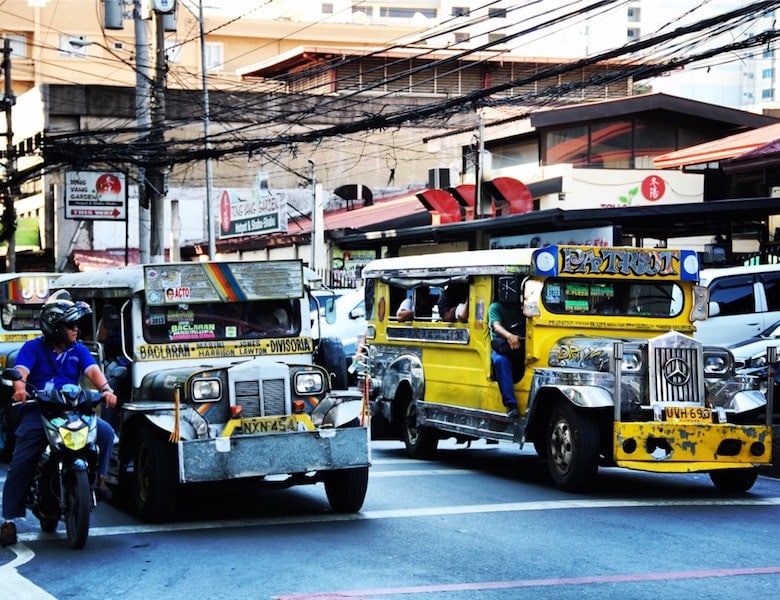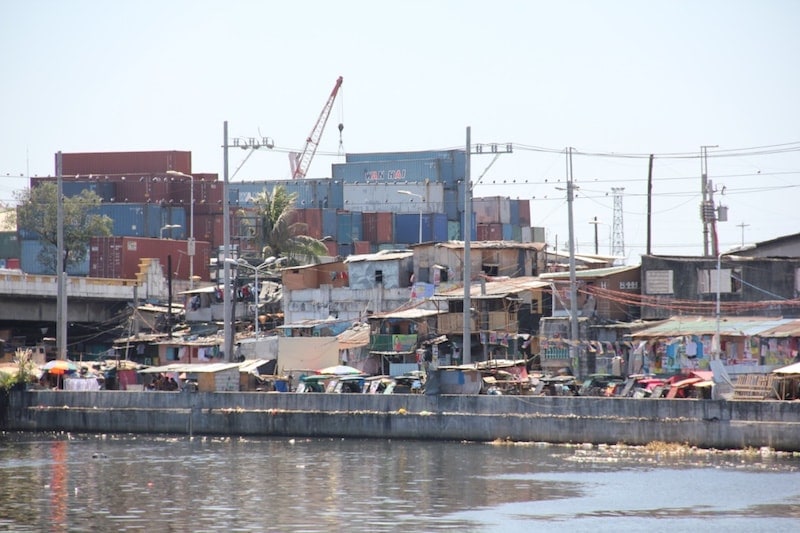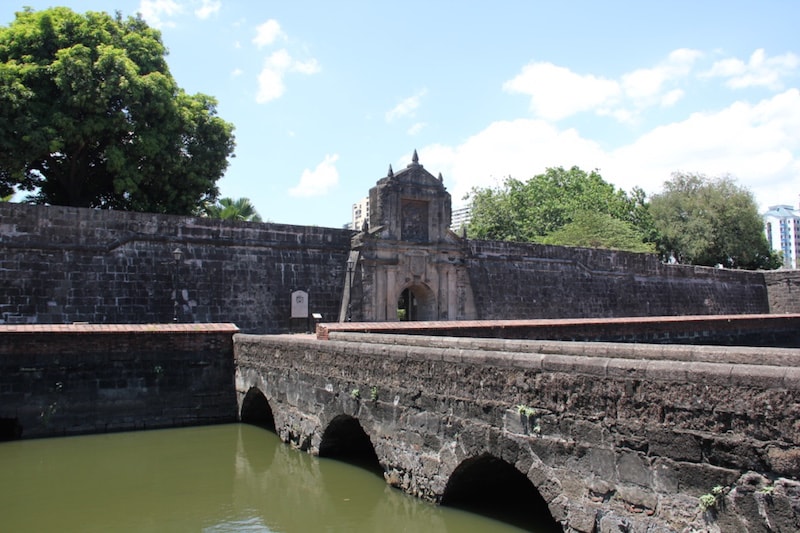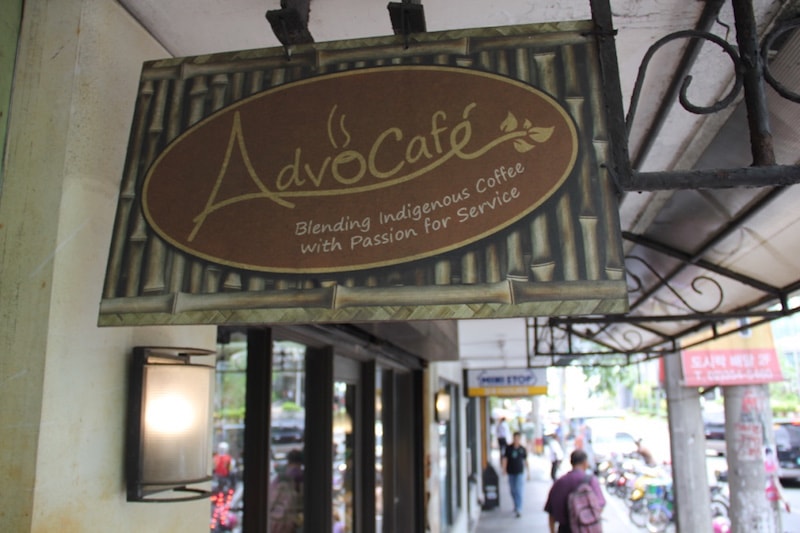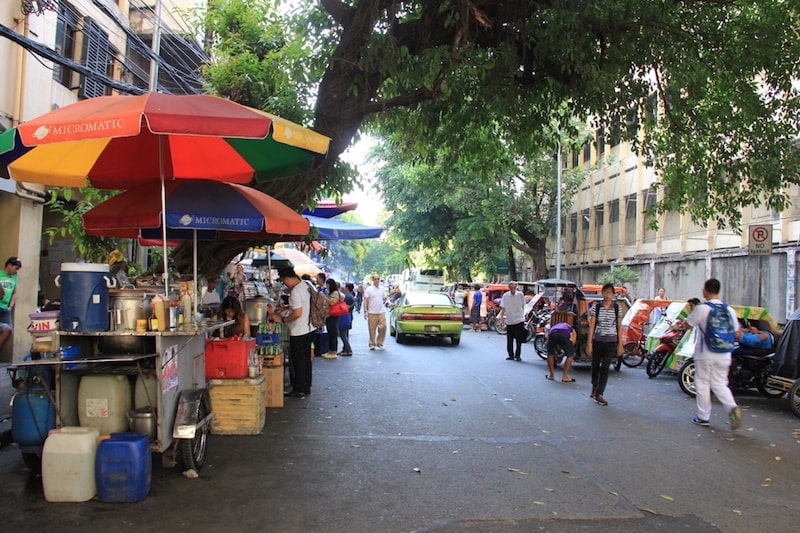Manila
Manila is the city that people love to hate. It’s the densely populated capital of the Philippines that overwhelms visitors each day with its hasty atmosphere and cluttered appearance.
It’s almost Bangkok meets New Delhi, enveloping rapid westernisation on one end and dense poverty on the other. But despite all its chaos and what people may say, Manila is definitely not a place to get-in-and-get-out. There is so much life here, so much that one should witness to gain a better understanding of the country and its people.
So before you head to islands, challenge this intriguing gauntlet and see for yourself what this mega-city has to offer.
Getting there
Air
The best and most practical way to reach Manila is by air. Most airlines fly directly into Ninoy Aquino International Airport, which is only a short 7km taxi ride from downtown Makati City. It’s worth noting that Manila has some of the worst traffic in the world so this short journey can take over half an hour depending on what time of day you arrive. The cost of the taxi should be around £5.
Bus
Regular buses connect Manila with surrounding cities in the North, South and Eastern parts of Luzon Island.
Boat
Manila is the main hub that connects ferries to surrounding islands. Several companies operate regular ferries to Manila from ports throughout the Philippines.
Gallery
Getting around
Jeepney

Tricycle

Walking
Train (Metro)
Bicycle
Not to miss
Intramurous
Intramurous is the historic walled city of Manila. Built by the Spanish in the 15th century, the city is one of Manila’s most fascinating landmarks. Visit the San Augustin Cathedral, Fort Santaigo (Where you can learn all about the nations hero Josè Rizal) and The Cathedral of Manila, all within walking distance of one another. There is also the option to ride a tricycle around the old city, which if you haven’t rode in one yet this is your perfect opportunity.

Ride a Bamboo Bicycle
![]() Bambike is a socio-ecological enterprise based in the Philippines that hand-makes bamboo bicycles with fair-trade labour and sustainable building practices. They offer eco-tours through Intramurous where visitors can ride through the streets on bamboo bikes that have been handmade by Gawad Kalinga villagers here in the Philippines. They have the option of a 2.5-hour tour for 1200 pesos or a one-hour tour for 600 pesos. You can also hire the bikes on your own for 300 pesos per hour.
Bambike is a socio-ecological enterprise based in the Philippines that hand-makes bamboo bicycles with fair-trade labour and sustainable building practices. They offer eco-tours through Intramurous where visitors can ride through the streets on bamboo bikes that have been handmade by Gawad Kalinga villagers here in the Philippines. They have the option of a 2.5-hour tour for 1200 pesos or a one-hour tour for 600 pesos. You can also hire the bikes on your own for 300 pesos per hour.
Other attractions & sights
Tour with a local
![]() WithLocals offer a range of tours run by local people in Manila. Enjoy true Filipino food and dine with a family in a local home, or take a trip to the old down town Manila, taking local modes of transport like Jeepneys and trains, and learning the Filipino way of life. Browse through their range of tours available in Manila and find one that suits you.
WithLocals offer a range of tours run by local people in Manila. Enjoy true Filipino food and dine with a family in a local home, or take a trip to the old down town Manila, taking local modes of transport like Jeepneys and trains, and learning the Filipino way of life. Browse through their range of tours available in Manila and find one that suits you.
Take a community walking tour
![]() Makabata Guest House offers a vibrant community walking experience through the hidden streets of Malate, hosted by the Bahay Tuluyan youth leaders. Immerse yourself in the vibrant community of the barangays of Leveriza and try some delicious local foods. The 3-hour tours depart from Makabata Guest House and will cost you 500 pesos per person for the experience.
Makabata Guest House offers a vibrant community walking experience through the hidden streets of Malate, hosted by the Bahay Tuluyan youth leaders. Immerse yourself in the vibrant community of the barangays of Leveriza and try some delicious local foods. The 3-hour tours depart from Makabata Guest House and will cost you 500 pesos per person for the experience.
Rizal Park
Manila’s iconic Rizal Park is one of the largest urban parks in Asia. Housing numerous gardens, fountains, and plazas the park is a great place to walk around and cool down from the midday heat. Named after the national hero, Josè Rizal, the park runs daily tours every Wednesday to Sunday at 9am for only 10 pesos per person.
Spend a day museum hopping
There are many great museums to explore in Manila that tell the rich history of the Philippines. Spend a day museum hopping and learn about the Philippines’ past.
National Museum of the Philippines
Closed Mondays. Opening Hours 10:00 – 17:00.
Museum of the Filipino People
Closed Mondays. Opening Hours 10:00 – 17:00.
Bahay Tsinoy, Intramurous
Closed Mondays. Opening Hours 13:00 – 17:00.
Museo Pambata
Closed Mondays. Opening Hours 9:00 – 17:00.
Casa Manila
Open daily besuchen sie hier. Opening Hours 11:00 – 22:00.
Eat for a cause
The Philippines is known as one of the highest concentrations of social enterprise per capita in the world. While you’re in Manila visit the ![]() Advocafe, a café that serves indigenous coffee and supports indigenous peoples efforts for sustainable living. You can also head over to
Advocafe, a café that serves indigenous coffee and supports indigenous peoples efforts for sustainable living. You can also head over to ![]() Makabata Guest House and Café, a social enterprise and youth training centre run by children’s rights organisation, Bahay Tuluyan. By choosing to dine at these places you are supporting the work that both organisations are doing in the community.
Makabata Guest House and Café, a social enterprise and youth training centre run by children’s rights organisation, Bahay Tuluyan. By choosing to dine at these places you are supporting the work that both organisations are doing in the community.
Admire Manila’s architecture
Having been colonised by the Spanish, the Portuguese and the Americans Manila boasts colonial architecture all throughout the city. Grab your camera and step back in time visiting some of these historic landmarks.
- Manila Cathedral (circa. 1571)
- Cuartel de Santa Lucia (circa. 1781)
- Manila Metropolitan Theatre (circa. 1931)
- Binondo Church (circa. 1596)
- San Agustin Church (circa. 1607)
- Manila Central Post Office (circa. 1926)
Food & drink
Many people say that the Philippines struggles when it comes to their own unique cuisine. Given their pre influence of Spanish, American and French their local cuisine has somehow got muddled somewhere between those three influences and local Filipino cooking practices. National dish Adobo is a delicious mix of either pork or chicken with a vinegar sauce and rice and you will find this at most local vendors and mainstream restaurants.
In Manila there is also an abundance of western influence and you find yourself having to search harder for a typically ‘Filipino’ restaurant. Aside their version of fast-food, Jollibee, which doesn’t leave much other than a soggy cheeseburger, fried chicken, rice and soft drinks, the main tourist spots are lined with Starbucks, McDonalds and other cuisines from around the world.
Street food consists of the occasional fried chicken and pork with rice at very reasonable prices. For the sweet tooths, fruit snacks and desserts are sold from street vendors over the city, mainly consisting of rice, sugar and coconut concoctions.
Alcohol in the Philippines can be very cheap with their local rum, Tunduay, going for less than $2 for a 250 ml bottle. There are many bars in Makati and Malate areas to go for a drink but it is always best to go in a group at night because the city can become quite unsafe after dark.

Accommodation
The best areas to stay in Manila are Malate, Ermita or Makati. Ermita and Malate are closer to the historical landmarks and Makati is where most foreign embassies and banks are located. Many people say that Makati is a safer area due to the expat friendly environment, but the area does not really reflect the real Manila.
You can find many hotels and hostels located in all those areas, and the hostels make it a safe and easy place to navigate as they offer walking tours and instructions for activities in the area.
When looking for accommodation sites like TripAdvisor and Booking.com can really be your best friend. Put your dates into TripAdvisor and you can search by price as well as seeing the ratings, helping you pick the best value for money. Use Booking.com to search 500,000+ hotels in more than 200 countries worldwide.
Worth noting
Pharmacies are plentiful around town so medications are easy to access.
The emergency number for the Philippine National Police is 117.

